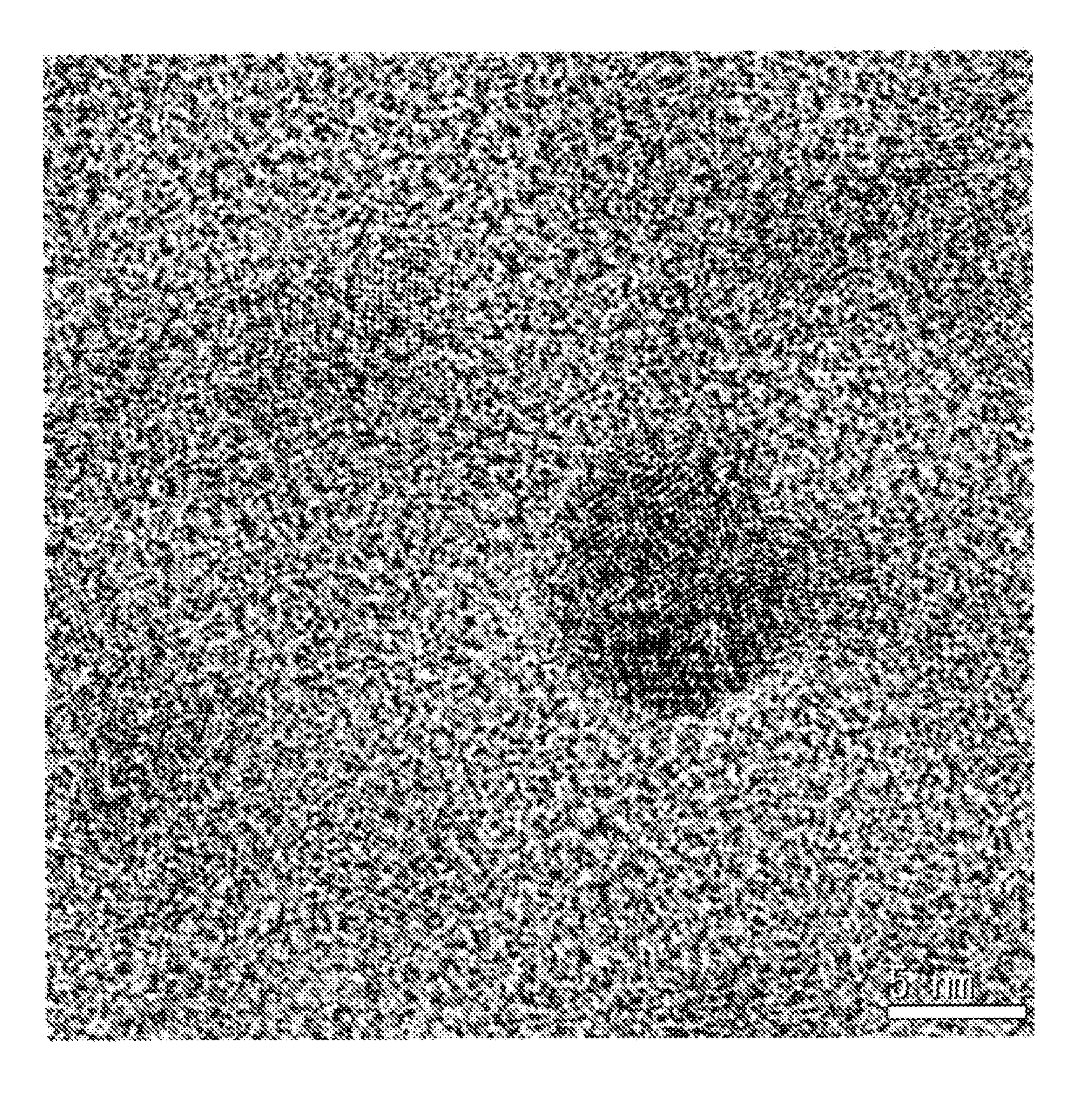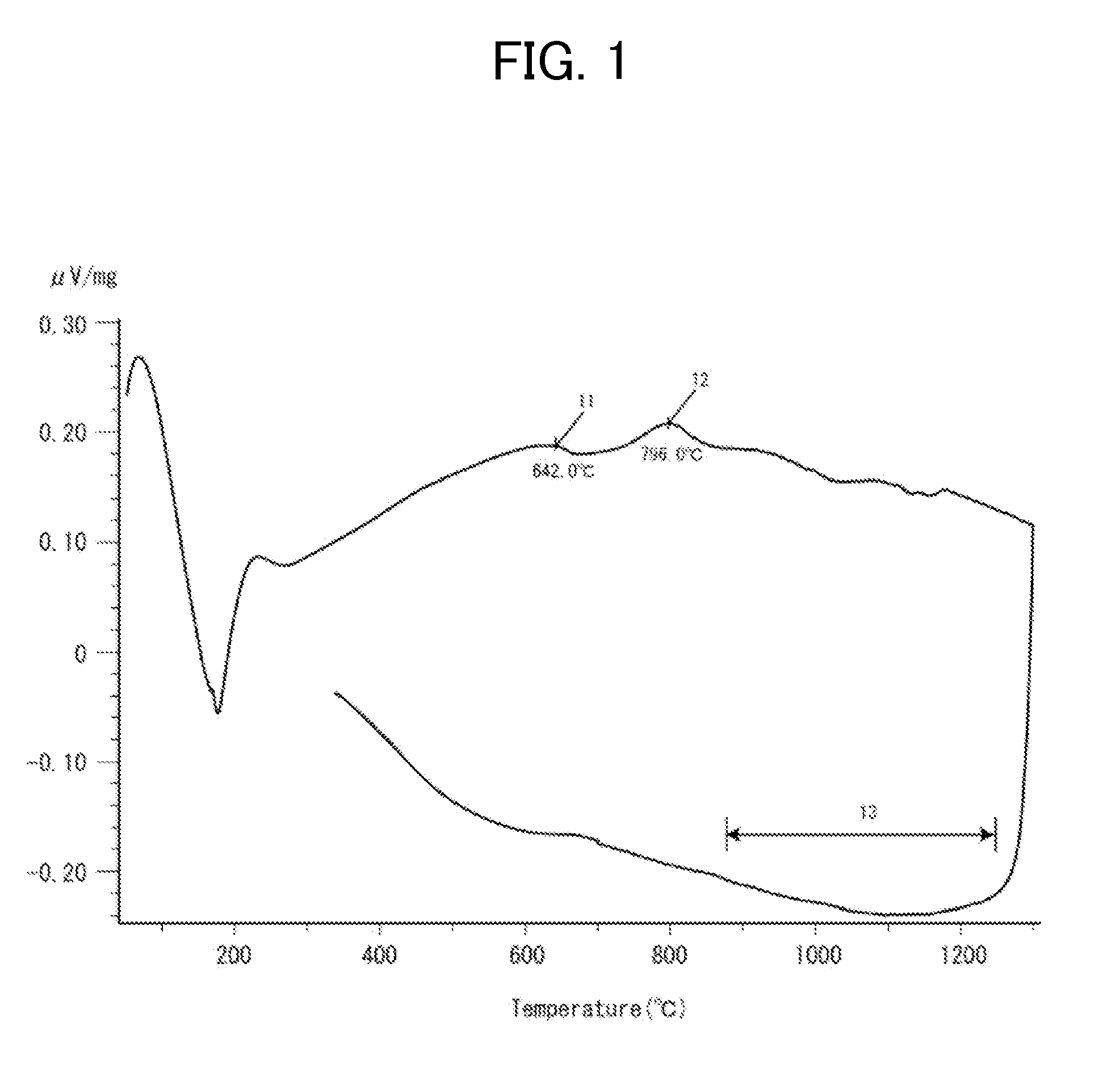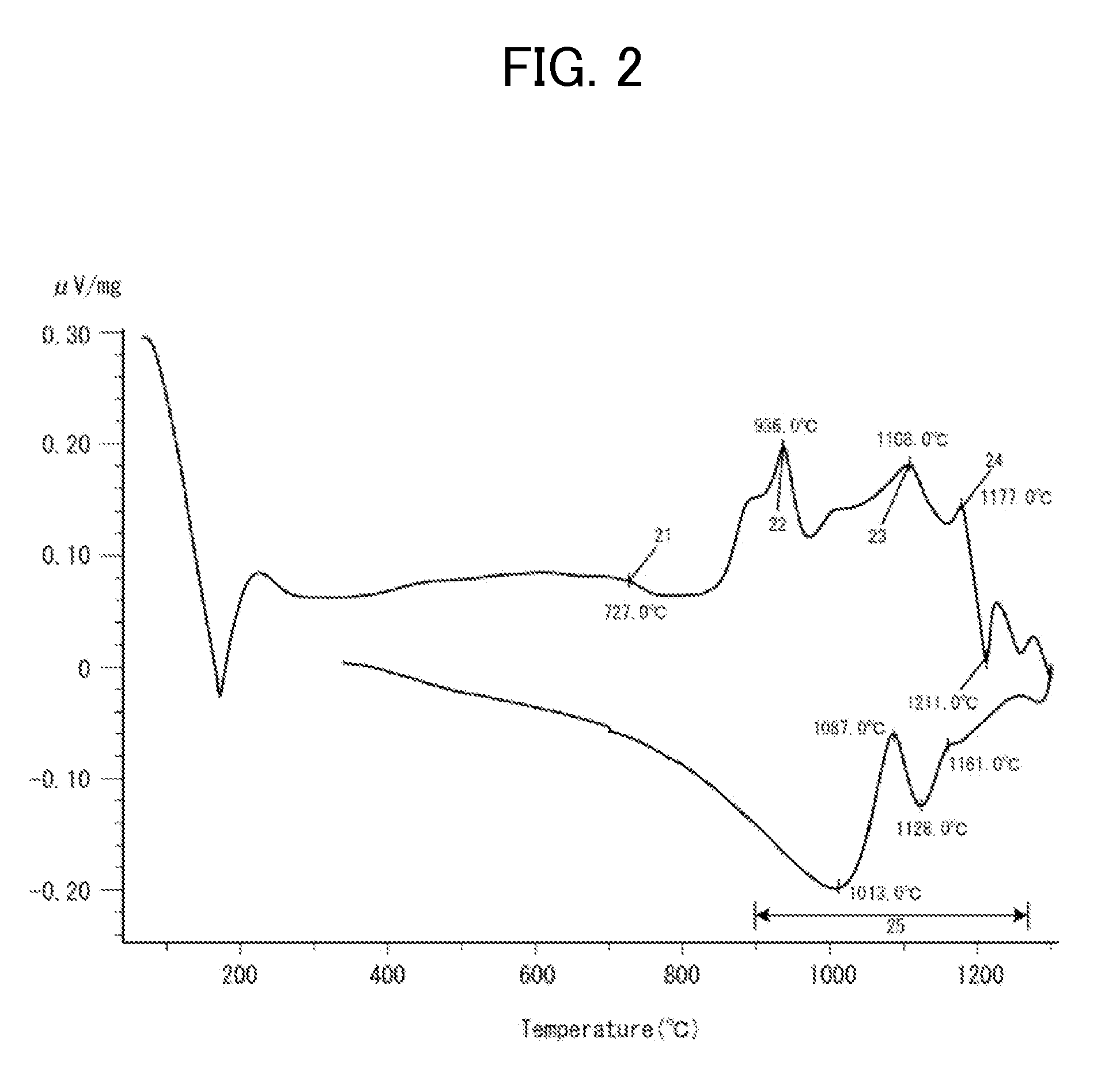Crystallized glass substrate for information recording medium and method of producing the same
- Summary
- Abstract
- Description
- Claims
- Application Information
AI Technical Summary
Benefits of technology
Problems solved by technology
Method used
Image
Examples
examples
[0139]Preferable examples of the present invention are explained in the following.
[0140]The glasses of the examples of the present invention were all prepared by mixing a raw material of oxides, carbonates, etc. and dissolving them in a quartz or platinum crucible at a temperature of about 1250 degree C. to 1450 degree C. to sufficiently melt the batch of raw material without generating molten residues. Then the molten raw material was heated to a temperature of about 1350 degree C. to 1500 degree C. followed by lowering the temperature to 1450 degree C. to 1250 degree C. to eliminate bubbles generated inside the glass and to perform clarifying. Thereafter, a predetermined amount of the glass was flowed out while being maintained at a constant temperature; and a glass shaped body was obtained in a direct press system by setting the temperature of upper mold to 300±100 degree C. and the temperature of lower mold to Tg±50 degree C., and molding the glass into a disk shape using these ...
example 62
[0150]The polished substrate for 2.5 inch HDD (65φ×0.635 mmt) of Example 14 was immersed into a mixed salt of potassium nitrate and sodium nitrate (KNO3:NaNO3=1:3) at 400 degree C. for 0.25 hour to form a compression stress layer at the surface. It was confirmed for the substrate that the ring flexural strength has increased by 3 times of that (450 MPa) before forming the compression stress layer. In this connection, the “ring flexural strength” as used herein refers to a flexural strength which is measured by a concentric circle flexural method of preparing a thin circular disc sample with diameter 65 mm and thickness 0.635 mm and measuring the strength of the circular disc sample using a circular supporting ring and a load ring. It was also confirmed that the fracture toughness (K1C) has increased to 2.3.
example 63
[0151]The polished substrate for 2.5 inch HDD (65φ×0.635 mmt) of Example 14 was immersed into potassium nitrate salt (KNO3) at 400 degree C. for 0.5 hour to form a compression stress layer at the surface. It was confirmed for the substrate that the ring flexural strength has increased by 4 times of that (450 MPa) before forming the compression stress layer. It was also confirmed that the fracture toughness (K1C) has increased to 2.4.
PUM
| Property | Measurement | Unit |
|---|---|---|
| Fraction | aaaaa | aaaaa |
| Fraction | aaaaa | aaaaa |
| Fraction | aaaaa | aaaaa |
Abstract
Description
Claims
Application Information
 Login to View More
Login to View More - R&D
- Intellectual Property
- Life Sciences
- Materials
- Tech Scout
- Unparalleled Data Quality
- Higher Quality Content
- 60% Fewer Hallucinations
Browse by: Latest US Patents, China's latest patents, Technical Efficacy Thesaurus, Application Domain, Technology Topic, Popular Technical Reports.
© 2025 PatSnap. All rights reserved.Legal|Privacy policy|Modern Slavery Act Transparency Statement|Sitemap|About US| Contact US: help@patsnap.com



